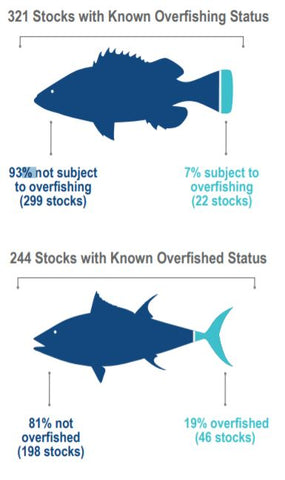Seems like it, but the devil would be in the details. The problem is there are very few details in many of these proclamations including the recent Executive Order by US President, Joe Biden.
Protected areas can come in different forms. Some you can recreationally hunt and fish in, some you can’t; some allow commercial access (e.g. logging, oil and gas, fishing), some don’t.
The goal with protected areas is to strike a good balance between human interests, like the wellbeing of coastal communities, and conserving nature - which also provides us longer term benefits. Sustainable fisheries play an important role in the nation’s economy. Combined, U.S. commercial and recreational saltwater fishing generated more than $244 billion in sales and supported more than 1.7 million jobs in 2017. However, the economic viability of the fisheries sector is now in great peril due to the effects of the novel coronavirus which destroyed demand for seafood across a complicated U.S. supply chain, from luxury items such as lobster and crab, generally consumed at restaurants, to grocery staples sourced from the world’s fish farms. With restaurants closed, many of the nation’s fisheries — across geography, species, gear types and management — have reported sales slumps as high as 95 percent (source). Federal CARES relief has been slow, and inadequate. Additional closures and regulation is likely to place untimely pressure on the sector.
So what does a good human, economic, and fisheries balance look like? A lot of that depends on baseline conditions and geography, or in our case oceanography. Right now about 13% of the world’s oceans are protected in some way and 26% of US waters are covered by marine protected areas (MPAs). It is also important to recognize that MPAs are just one way to manage marine resources. Catch limits including size and species, capacity limits like capping the number of fishing vessels or licenses, and time/area closures are tools used to conserve fish stocks and protect ocean ecosystems. These are applied so effectively by the US government under the Magnuson-Stevens Act that NOAA Fisheries most recent Annual Status of Stocks presentation to Congress summarized 7% of stocks are subject to overfishing and 19% are overfished (population is low) with all of the largest U.S. stocks reported sustainable: by weight, roughly 99% of American wild-caught seafood is sustainable (source).

Some research does show that MPAs can be effective at rebuilding overfished species in near-shore environments and in some deeper water benthic (sea floor) habitats. That is part of the reason why California established its Marine Life Protection Act (MLPA), resulting in 124 MPA covering 16% of the State’s coastal waters. The Magnuson-Stevens Act overlaps with the MLPA creating one of the best marine resource management systems in the world; thus Federal and State waters in the US and California are already very well managed. There is room for incremental improvement with good science, careful planning, and multi-stakeholder involvement but not huge increases in MPAs. International waters, or the high seas beyond 200 miles from shore that are under national jurisdictions is a whole other can of worms. Please subscribe to the newsletter here and stay tuned as we dive into relevant areas for consideration on the high seas.
